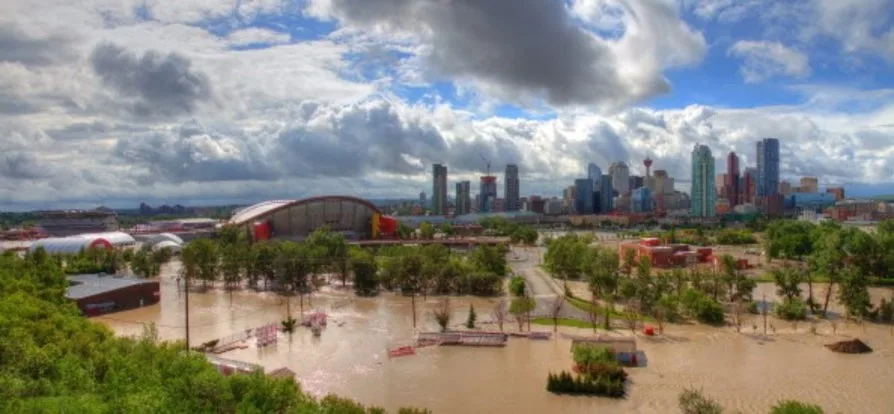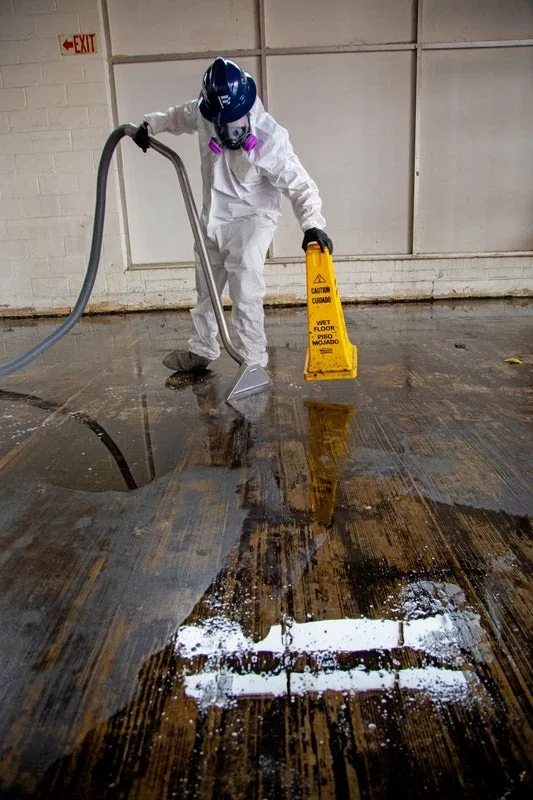
Here's how to handle flooding on your property before and after the waters rise
Whether due to a natural disaster, or a plumbing failure, most Canadians may experience a flood emergency at some point in their lives — and experts say property owners should take that possibility completely seriously.

(Getty Images/James Anderson)
Canada is a sprawling land of rivers and lakes, with wicked summer thunderstorms and abundant, long-lived winter snow. Though vibrant, and beautiful, sometimes those features of our country can turn against us, bringing floodwaters pouring onto properties.
Flooding from snowmelt, for example, complicated by ice jams, is a regular worry in the springtime for anyone who owns property near Canada’s rivers, and spring flood emergencies are a regular hassle for people in almost every province.
In the summertime, severe thunderstorms can deliver intense local downpours, and moisture-laden low-pressure systems can stall over a given area, delivering long-lived deluges that result in localized flooding.
In 2014, for example, the community of Burlington, Ont., was slammed by a quick succession of thunderstorms that dropped two months' worth of rain on the city, with some 3,000 homes, along with multiple businesses and other properties, experiencing some degree of flooding.
But even people who aren’t in flood-prone areas still might face a flood emergency just from a simple plumbing mishap or even fire.
Regardless of how it happens, property owners and communities who find themselves in a flood emergency need to take it completely seriously, warns Jim Mandeville, a senior project manager with First Onsite Property Restoration.

“A lot of people think, well, it’s just some water in my house, and I can clean this up. And you know what, if it’s a puddle in front of your sink, maybe that’s true,” he told The Weather Network. “But if it’s any more than that, it’s critical that they retain a professional.”
The flooding cost to property owners and communities can be steep. Just last year, one ice jam in Fort McMurray, Alta., caused more than $500 million in insured damages, and was one of the top-5 costliest disasters for 2020. In 2013, immense snowpack in the Rocky Mountains of Alberta, coupled with a wetter than normal spring, all factored into the province’s epic flood disaster that year. Some 100,000 Albertans were forced from their homes, five people lost their lives, and the economic impact ran to the order of $5 billion.
Rivers aren’t the only flood-prone parts of Canada: the populous shores of the Great Lakes, particularly Lake Ontario and Lake Erie, are also prone to high water levels during the spring melt or after prolonged rainfall events. Storm surge on lakes and along ocean shorelines can damage properties as well.
HOURS MAKE A DIFFERENCE
Whatever triggers the flooding, Mandeville says it’s not only a good idea to get an expert in to get the water out and assess the damage, it’s also critical to do it right away.
“Literally hours in response time can result in differences of tens of thousands of dollars or more in damages,” he says.
Property owners should also make sure their own personal safety is a priority during the crisis.
“The first thing we see is, there’s a foot of water in their basement, and what does everybody do? They go running in there with their bare feet,” Mandeville says. “And that’s a terrible idea, because a lot of times, especially if this is a sewage incident, you know, that water is highly contaminated and highly dangerous. [There are] also obvious electrical hazards.”
Proper experts are trained in a variety of techniques that will minimize the kind of damage floodwaters can inflict, eliminating any long-term effects that could rear their heads in the years to come.
But property owners needn’t passively await the flood before preparing for it, Mandeville says.
Such preparations can be relatively small-scale, such as a simple backflow preventer on sewage lines, or storing valuables such as documents in waterproof containers or totes for easy evacuation. To keep ahead of plumbing mishaps, there are even devices that can be installed on your main water line that can alert home and business owners to leaks before they become noticeable, even pinging them on an accompanying app.
“[There are] simple, common-sense little things that can be done that don’t have to interrupt your lifestyle or even your decorations that can help mitigate the extent of the water damage in your building,” Mandeville says.
Larger-scale preparations can be made during construction or renovations, and Mandeville says there are even types of drywall that are resistant to mould formation. He does, however, warn that buildings in flood-prone areas can be a tougher challenge, particularly in areas where flooding is expected to worsen due to climate change.
“In those scenarios, there’s not much that can be done, except for major renovations or moving,” Mandeville says.
Still, he says no matter where you live, it’s always worth it to prepare for the very real possibility that, someday, your property may very well flood – after all, properties are often a person’s or business’s most valuable assets, and it makes sense to protect them.










